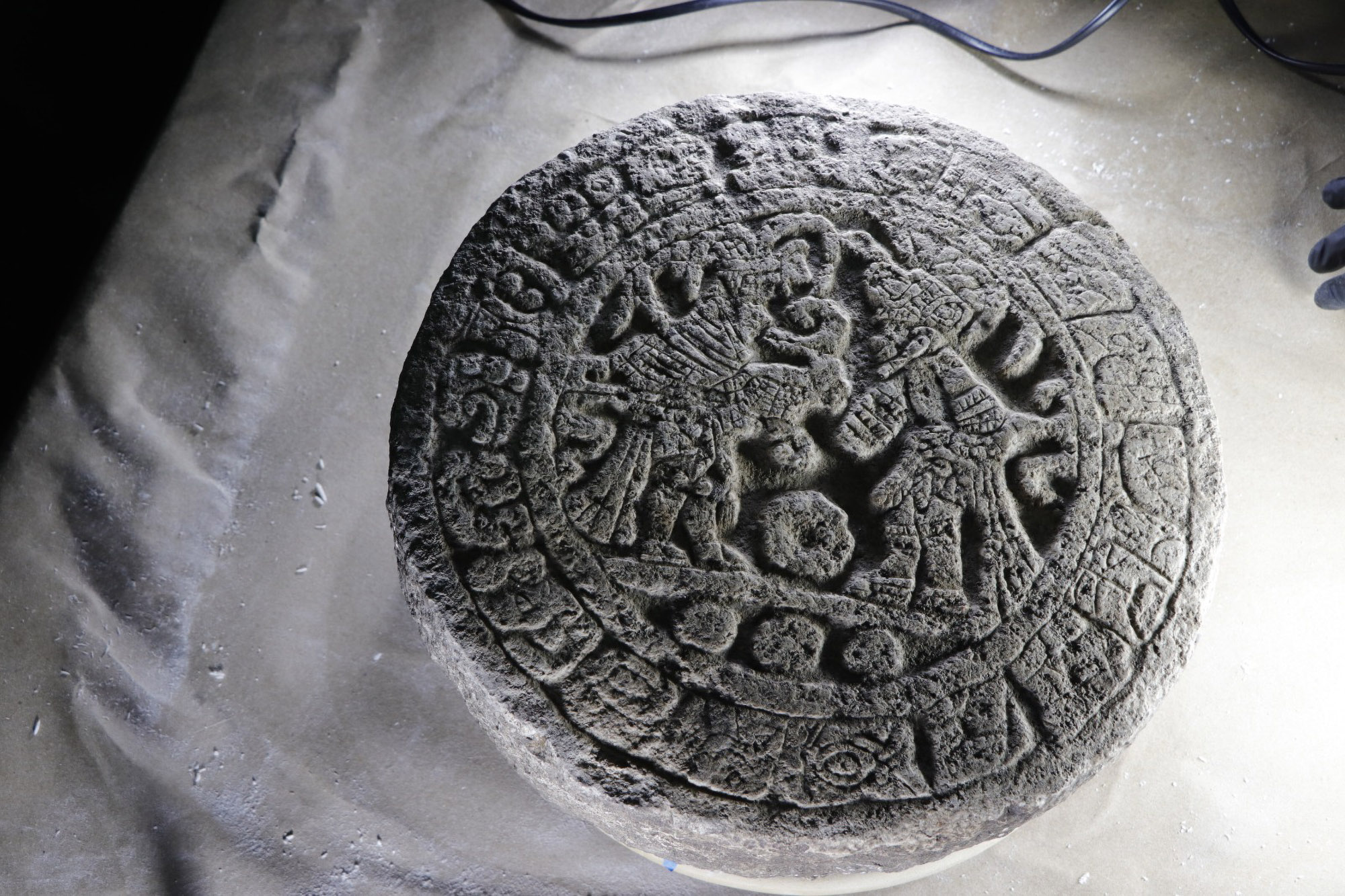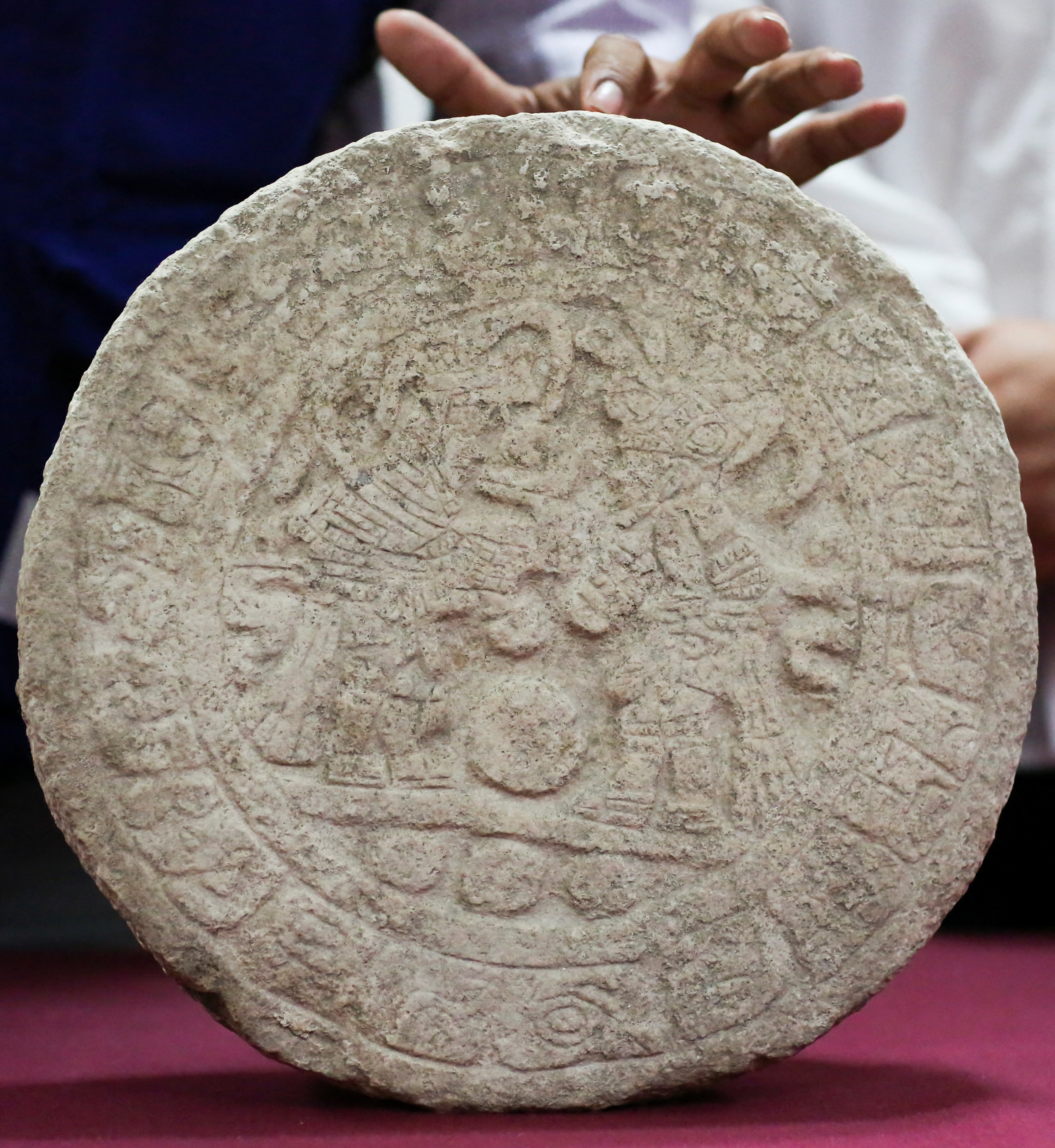The ancient Maya civilization has long been a source of fascination and intrigue, captivating scholars and the general public alike with its rich cultural heritage and technological advancements. Recently, a remarkable discovery at the archaeological site of Chichén Itzá in Yucatán, Mexico, has shed new light on the Mayan ball game and its associated rituals. The unearthing of a rare and well-preserved stone marker from the Mesoamerican ball game, complete with a detailed hieroglyphic inscription, is a true testament to the enduring legacy of this remarkable civilization.
The Remarkable Discovery

Amidst the impressive ruins of Chichén Itzá, a team of dedicated archaeologists made a stunning discovery – a disc-shaped stone marker from the Maya ball game, known as Pok Ta Pok in the Mayan language. This circular piece of limestone, measuring 32.5 cm (12.8 inches) in diameter and weighing 40 kilos (88 lbs), is an exceptional find due to its level of preservation and the presence of a complete hieroglyphic text, a rarity in Chichén Itzá.
The Significance of the Hieroglyphic Inscription
The hieroglyphic inscription, engraved around the outer border of the stone marker, provides a wealth of information about the Mayan ball game and its associated rituals. The text includes a short count date that translates to the year 894 A.D., making this inscription one of the last significant hieroglyphic texts about the ball game to survive before the Mayan collapse and the demise of their writing system. This discovery is a true treasure trove, offering invaluable insights into the past and the cultural practices of the Maya.
The Iconography and Representation

The center of the stone marker features two figures engaged in the Mesoamerican ball game. The figure on the left is adorned with a feathered headdress and a flowered sash, while the figure on the right wears a snake turban and protective equipment commonly associated with the game. The presence of a scroll hovering in front of the left figure’s face likely represents a voice or exhalation, suggesting a specific ritual or event related to the ball game. These intricate details provide a glimpse into the ceremonial and symbolic aspects of this ancient sport.
The Architectural Context
The stone marker was discovered within the architectural complex of the Chichanchob, also known as the Casa Colorada or Casa Roja, one of the best-preserved monumental structures in the city of Chichén Itzá. This structure, built in the Terminal Classic period (ca. 800-920) in the Puuc architectural style, had a small ball game court added to its back wall shortly after its construction. The discovery of the stone marker within this specific architectural context further enhances our understanding of the role and significance of the ball game within Mayan society.
Preservation and Analysis

The stone marker was found upside-down, less than two feet under the surface of the ground, likely having been part of the east wall of an access arch leading into the Casa Colorada complex. INAH (National Institute of Anthropology and History) conservators have begun a desalination process and cleaning with distilled water to preserve the artifact. Researchers have also employed the photogrammetry technique, capturing high-resolution images to create a 3D model of the disc for detailed study and a full translation of the inscription.
Conclusion
The discovery of this rare Maya ball game stone marker with a complete hieroglyphic text is a remarkable achievement in the ongoing efforts to uncover and preserve the rich cultural heritage of the Mayan civilization. This artifact, with its intricate iconography and valuable inscriptions, offers a unique glimpse into the rituals and practices associated with the Mesoamerican ball game, shedding light on a crucial aspect of Mayan society. As researchers continue to study and analyze this remarkable find, the insights gained will undoubtedly contribute to our broader understanding of the Maya, their beliefs, and their sophisticated cultural traditions.
This discovery is a testament to the enduring legacy of the Maya and the unwavering dedication of archaeologists and researchers who tirelessly work to unravel the mysteries of this captivating civilization. The stone marker from the Mayan ball game is a true treasure, a window into the past that invites us to appreciate the ingenuity, creativity, and cultural richness of the Maya people. As we delve deeper into the study of this remarkable artifact, we can only imagine the countless other secrets that still lie buried, waiting to be uncovered and shared with the world.
